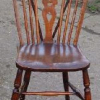Free Online Productivity Tools
i2Speak
i2Symbol
i2OCR
iTex2Img
iWeb2Print
iWeb2Shot
i2Type
iPdf2Split
iPdf2Merge
i2Bopomofo
i2Arabic
i2Style
i2Image
i2PDF
iLatex2Rtf
Sci2ools
ICCV
2007
IEEE
2007
IEEE
How Good are Local Features for Classes of Geometric Objects
Recent work in object categorization often uses local image descriptors such as SIFT to learn and detect object categories. Such descriptors explicitly code local appearance and have shown impressive results on objects with sufficient local appearance statistics. However, many important object classes such as tools, cups and other man-made artifacts seem to require features that capture the respective shape and geometric layout of those object classes. Therefore this paper compares, on a novel data collection of 10 geometric object classes, various shape-based features with appearance-based descriptors such as SIFT. The analysis includes a direct comparison of feature statistics as well as results within standard recognition frameworks, which are partly intuitive, but sometimes surprising.
Computer Vision | Geometric Object Classes | ICCV 2007 | Important Object Classes | Local Image Descriptors | Object Categorization | Such Descriptors |
| Added | 14 Oct 2009 |
| Updated | 30 Oct 2009 |
| Type | Conference |
| Year | 2007 |
| Where | ICCV |
| Authors | Michael Stark, Bernt Schiele |
Comments (0)

